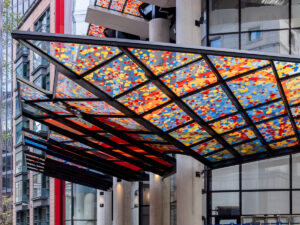
Transforming your home into a sanctuary that promotes wellness and tranquility can have a profound impact on your overall well-being. By incorporating thoughtful design elements and intentional spaces, you can create a harmonious environment that nurtures your mind, body, and spirit. Here are some tips on how to design wellness-oriented spaces in your home:
1. Natural Light and Airy Spaces
One of the key principles of creating a wellness-oriented space is to maximize natural light and create an airy atmosphere. Consider opening up windows, using sheer curtains, and opting for light-colored walls to make the space feel bright and inviting. Natural light has been shown to boost mood and productivity while also regulating the body’s circadian rhythm.
2. Declutter and Simplify
Clutter can create chaos and stress in a space, so it’s important to declutter and simplify your environment. Create designated storage areas for items, donate or discard things you no longer need, and keep surfaces clear to promote a sense of calm and organization. A clutter-free space can help clear your mind and reduce feelings of overwhelm.
3. Incorporate Biophilic Design Elements
Biophilic design focuses on bringing elements of the natural world into indoor spaces to enhance well-being. Consider incorporating plants, natural materials like wood and stone, and nature-inspired artwork into your home to create a connection to the outdoors. Plants not only purify the air but also have a calming effect on the mind.
4. Create Zones for Relaxation and Meditation
Dedicate specific areas in your home for relaxation and meditation to promote mindfulness and stress relief. Whether it’s a cozy reading nook, a yoga corner, or a meditation space, having designated zones for self-care activities can help you unwind and recharge. Consider adding comfortable seating, soft lighting, and soothing colors to enhance the relaxation experience.
5. Aromatherapy and Sensory Stimulation
Engage your senses by incorporating aromatherapy and sensory stimulation into your home design. Use essential oils, scented candles, or incense to create a calming ambiance and promote relaxation. Consider adding textured fabrics, soft rugs, and tactile elements to create a sensory-rich environment that appeals to touch and sight.
6. Mindful Technology Use
In today’s digital age, it’s important to be mindful of the impact of technology on our well-being. Create tech-free zones in your home where you can unplug and unwind without distractions. Consider incorporating sound systems that play calming music or nature sounds to create a peaceful atmosphere without the constant buzz of electronics.
7. Personalize and Reflect Your Values
Your home should be a reflection of your values and personality, so don’t be afraid to personalize your wellness-oriented spaces with meaningful decor and items that bring you joy. Display photos of loved ones, incorporate inspirational quotes, or showcase artwork that resonates with you to create a space that feels truly yours.
By following these tips and incorporating wellness-oriented design principles into your home, you can create a sanctuary that supports your well-being and promotes a sense of balance and harmony in your daily life.







